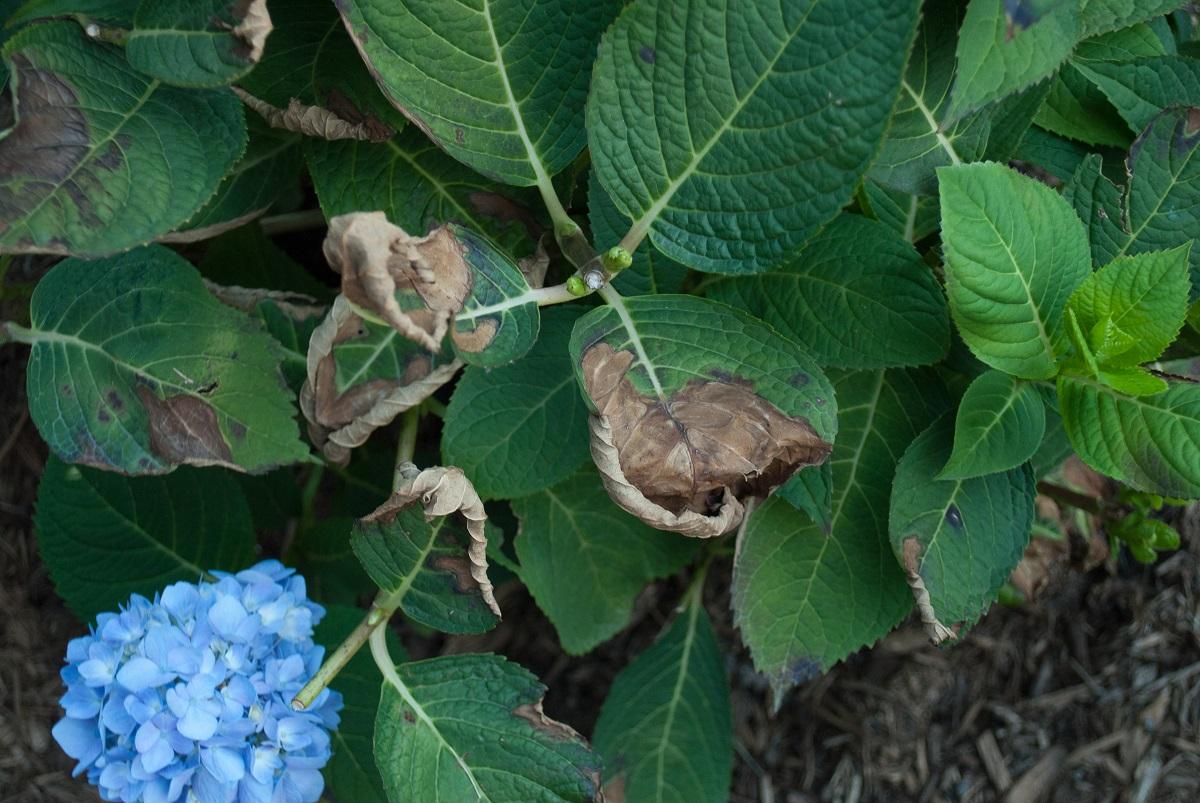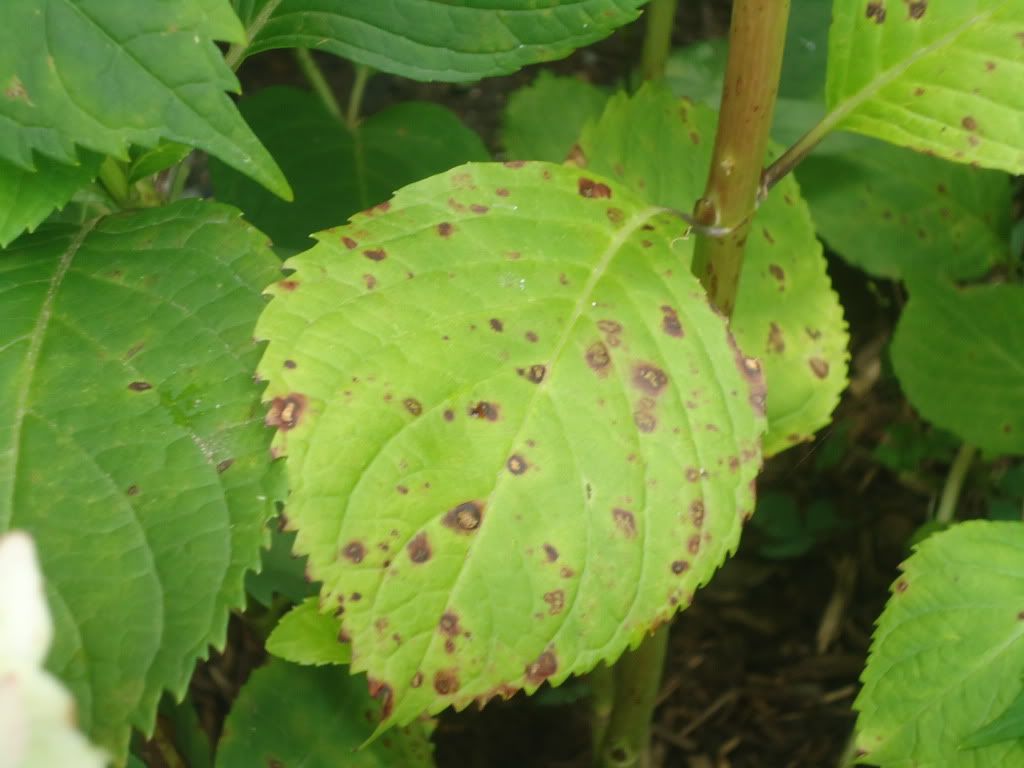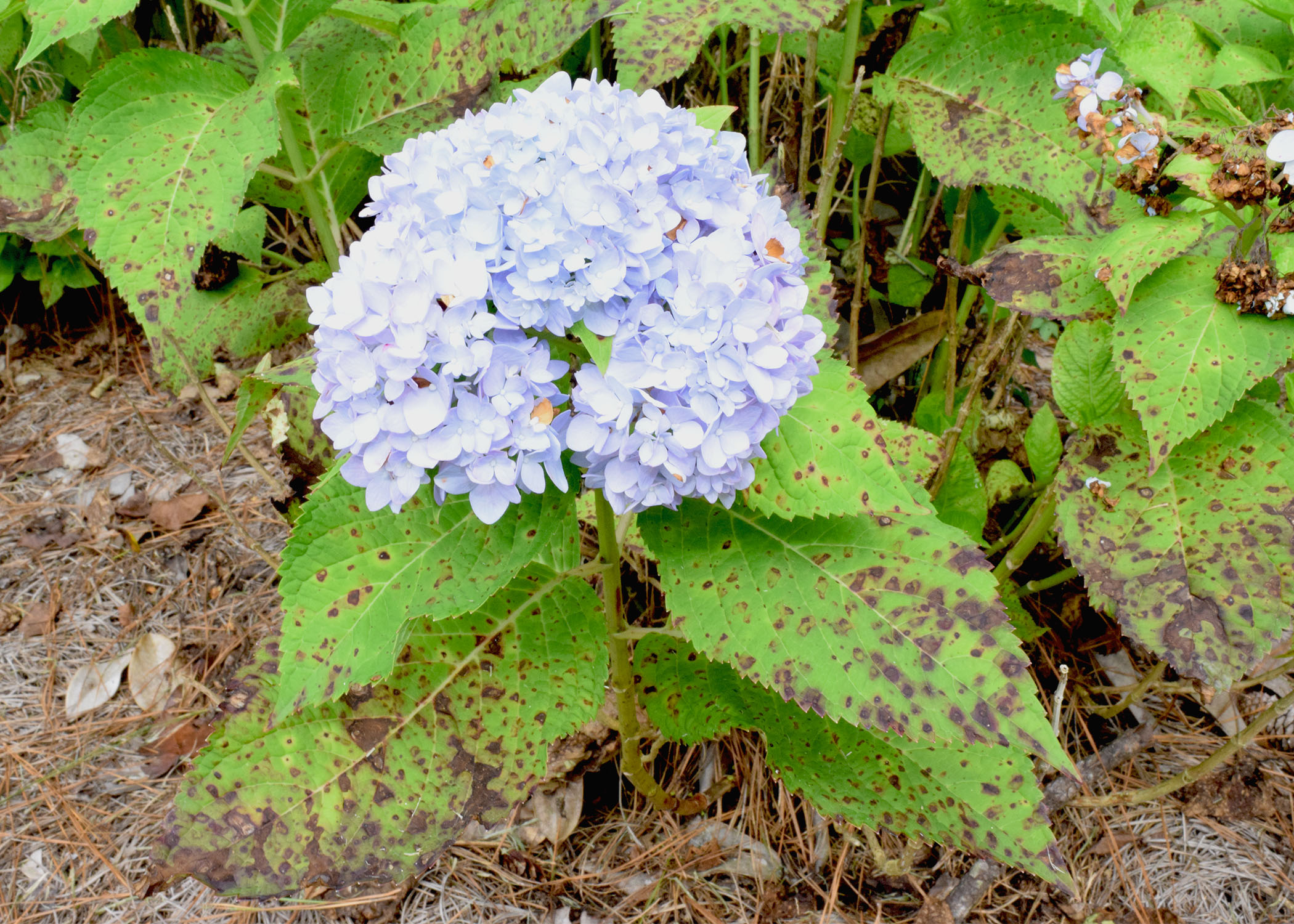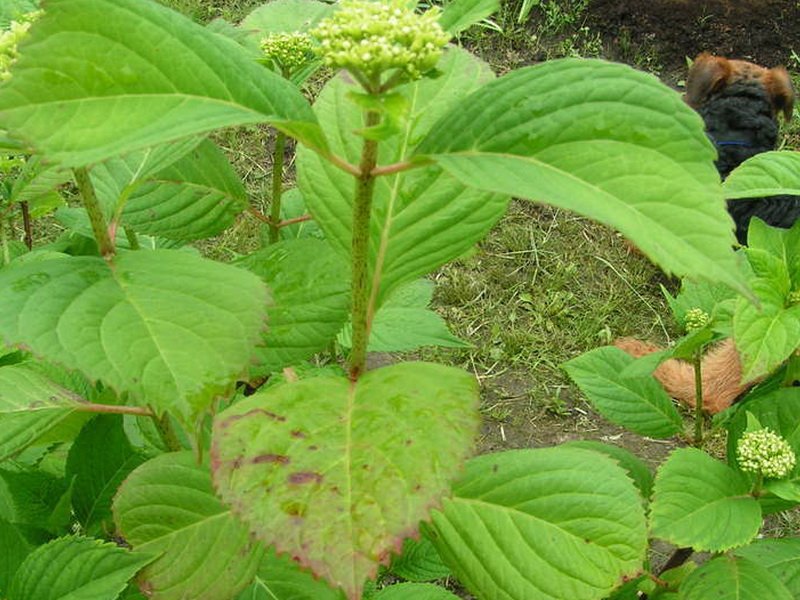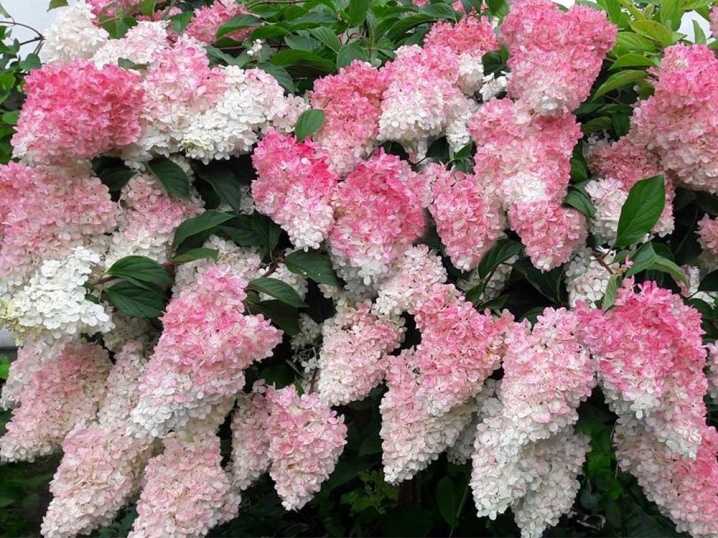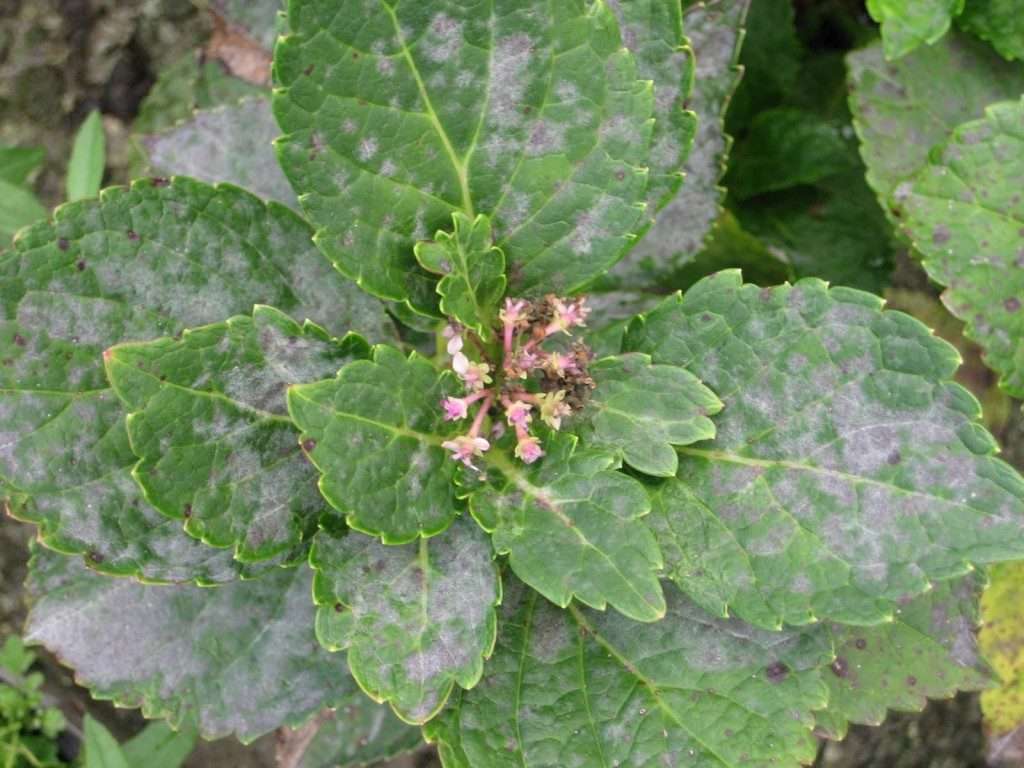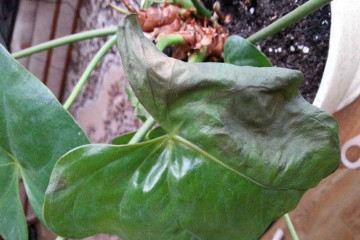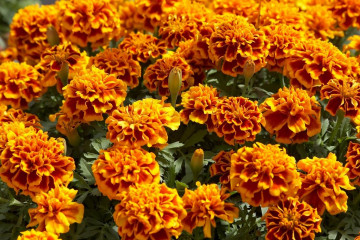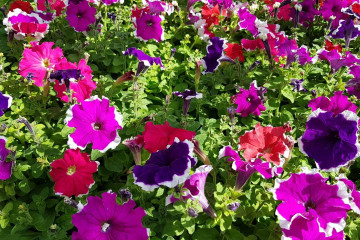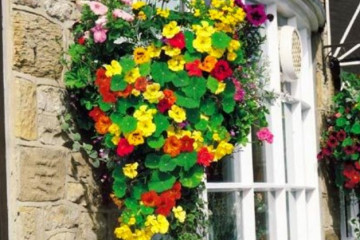Hydrangea diseases - turn yellow or black, leaves dry
Content:
Hydrangeas, like other flower crops, get sick. Bright flowers, large green leaves attract many insects, including harmful ones. Diseases of hydrangea do not differ from diseases of many garden plants.
Diseases of hydrangea paniculata
Despite the vitality of hydrangea paniculata, sometimes due to improper care or bad weather, the flowers get sick. Insects cause considerable harm to plants.
In addition to the weather and untimely care, there are many reasons why the flowers begin to ache, the tips of the leaves begin to dry out and shrivel:
- scorching rays of the sun;
- stagnation of water at the roots;
- nutritional deficiencies;
- unsuitable soil.
Typical diseases and pests of hydrangeas
The causative agents of diseases are:
- viruses;
- bacteria;
- fungi.
Destructive microorganisms enter the bushes from contaminated soil or planting material.
In addition to viruses and fungi, insect vectors of diseases threaten the culture. With their vital activity, they destroy plants.
- Leaf aphid. It lives on hydrangeas, feeding on juices. From its vital activity, the plant can dry out.
- Spider mite. The smallest insect eats the greenery on the bushes.
- Gall nematode. Small worms can destroy the plant, since they are poisoned with poisons, starting from the roots. It is difficult to deal with them, some growers suggest destroying the affected culture immediately.
- Slugs. They appear where bushes are planted too often. They are collected by hand or Molyuscocide is used in granules, which are scattered under the stems.
Ring spot virus
The source of ring spot is a virus. The description of the disease is given below:
- At first, small annular specks with a diameter of no more than 2 cm may appear on the foliage.
- In hydrangea, the edges of the leaves dry, deform, twist. The disease spreads throughout the flower.
- A diseased plant does not form buds (or there are few of them), there is no flowering.
Spot virus is a seedling disease. She is not treatable.
Flowers also pick up the virus from the infected soil. The peculiarity of the disease is that the signs are visible only after a year, when it is no longer possible to cope with it.
White spot (septoria)
One of the fungal diseases of hydrangea paniculata is septoria.
Symptoms are similar to annular viral spotting. The difference is in the form of spots. With septoria, red, brown, brick-colored spots are shapeless, located randomly throughout the leaf plate.
Gardeners, especially inexperienced ones, do not know what to do when the leaves of the hydrangea turn yellow. Since the causative agent of the disease is a fungus (Septoria), it is fought with special chemicals.
As soon as the first signs of the disease become visible, you must immediately begin treatment. Yellow leaves are cut off, disposed of. Plants are sprayed with products containing a lot of copper:
- Hom;
- copper sulfate;
- Ridomil gold.
Specialty stores offer many different drugs for combating diseases and treating indoor flowers. How to use the products is indicated on the packaging from the manufacturer. It is not advisable to violate the instructions.
Rust
Rust affects the thickening of plantings when the soil is oversaturated with nitrogen.
The disease is treatable - you need to spray with preparations with copper:
- Hom;
- Ordan;
- Topaz;
- Falcon.
How to use a particular product is indicated on the package. When working with chemicals, personal protective equipment must be used.
Gray and white rot
Fungus is the cause of both diseases. The plant becomes infected from infected soil.
Signs of white rot:
- white cotton bloom on the foliage of the plant;
- dark shoots;
- black specks on the plaque (sclerotia).
With gray rot, the stems lose their elasticity, become soft, loose. A gray bloom in the form of villi forms on the leaves and shoots. The disease eats away at the plant to holes.
At the first sign, urgent action is needed. First, all diseased parts of the plant are removed with a sharp knife, then they are sprayed with agents with fungicides:
- Fundazole;
- Fitosporin.
Iron chlorosis
The most dangerous disease is hydrangea, and not only paniculate, but also large-leaved and tree-like.
The metabolic function of the plant is disrupted. The foliage stops producing chlorophyll, which causes the leaves to lose color. They turn pale, turn yellow-gray, only the veins remain green.
The source of the disease is iron deficiency in the soil. An important factor in the development of the disease is the oversaturation of the earth with manure, which is why the process of iron absorption in the plant is disrupted. A weakened plant lowers immunity to other diseases.
Antichlorosis, Ferovit - means that will help to cope with the disease. If the disease is not started, the plant is sprayed, with a more severe lesion, it is watered at the root.
Why do hydrangea leaves turn yellow and wither
Drying, wilting, yellowing of hydrangea leaves is a frequent phenomenon, especially in a home plant.
Sometimes it is difficult for gardeners to determine why hydrangea leaves turn yellow. But the green part, like an indicator, reacts to the slightest changes in air temperature, irrigation regime, soil composition. Insect pests also cause leaf death on bushes.
Incorrect containment conditions
The gardener's negligence in caring for plants, as well as for indoor flowers, leads to the fact that the foliage may first turn yellow, then dry completely.
Changes in the external growing conditions can also cause foliage to wilt:
- sharp jumps in air temperature;
- indoor humidity (for indoor flowers);
- lack or excess of nutrients;
- insufficiently careful flower transplant;
- waterlogging of the plant.
Flowers need a lot of sunlight, but not under the scorching sun. From it the leaves will get burned. The light should be uniform and soft. Changing the growing location will solve the problem. If the hydrangea is in a pot at home, then it is rearranged.
Excess moisture
Hydrangea often loses foliage due to too wet soil.
- The roots first suffer from excessive waterlogging: they rot, then die off.
- Later - stems and leaves, since there is no nutrition from the roots.
- When the plant is uncomfortable, buds do not form, the gardener will not wait for lush flowering.
In order to somehow revive the hydrangea, it is carefully transplanted, since the young roots are vulnerable. Part of the old earthen coma is left. Watering is reduced, more often the greens of the plant are sprayed.
Frequent drafts
Home hydrangeas are harmed by too high humidity in the room. The room is often ventilated. At the same time, the formation of drafts is not allowed, since hydrangea is thermophilic.
It is necessary to carefully select a place of residence for plants.
Lack of minerals
Lack of fertilizer in the soil is one of the reasons for the wilting of foliage. During the growing period, starting in June, the bushes are fed at least 3 times (with organic matter and minerals).
So that the hydrangea does not turn yellow, in early spring it is fed with nitrogen, for example, Kemira flower, and then with potassium, phosphorus, iron.
At the end of autumn, there will be no extra potassium-phosphorus fertilizing for the growth of young shoots, the formation of new peduncles.
Abundant flowering
The supply of food in the soil is depleted, it is not enough for the growth and development of the plant. From lack of nutrition, the leaves dry out, turn yellow, fall off.
Hydrangea is a deciduous bush, the fall of leaves by time is a natural phenomenon. But from lack of nutrition, the leaves fall off prematurely.
Diseases of large-leaved hydrangea
Unlike tree and panicle hydrangea, large-leaved hydrangea is less resistant to temperate climates, is more often sick, capricious to growing conditions. But diseases in all types of hydrangeas are common. It's just that some varieties and varieties pick up ailments faster.
Powdery mildew damage
The causative agent of the disease is a fungus. Powdery mildew "sits" both on the home hydrangea and on the garden.
Downy mildew and powdery mildew infection occurs from infected soil. Warm and rainy weather accelerates the spread of the disease.
With real dew, yellow-green specks appear on the foliage, which grow, and then acquire a rusty color. On the inside of the leaves, there is an off-white cotton layer. Young shoots bend and die.
- For false dew, folk remedies are used, for example, a solution of laundry soap, which is sprayed on the plant.
- Fungicidal preparations will save you from powdery mildew.
Ring spot
This disease, caused by bacteria, first affects the leaves, which form circles that are brown around the edges. Further, the foliage turns yellow, curls, dies off.
Causes of ring spot infestation:
- diseased seedlings
- disease-carrying insects.
The main thing is to recognize the disease in time, to establish why the leaves of the hydrangea dry at the edges, and to destroy the diseased flower before the healthy plants in the neighborhood become infected.
Ascochitous spot
With ascochitis, rusty or brown blots appear on the bushes. Preventive measures will help to protect the large-leaved hydrangea from disease.
Before the foliage blooms, the bushes are sprayed with a Bordeaux mixture (1%) - 1 package is diluted in a bucket of water (10 l).
Most often, hydrangeas get sick from gardeners who do not take enough care of their plantings. Hydrangea is a chic plant with lush, bright flower caps.With proper care, the bushes will stand until October with bright greenery and huge flowers that are impossible to admire. And if you know all the diseases of hydrangea, then their treatment and elimination of the consequences will not be a problem.
